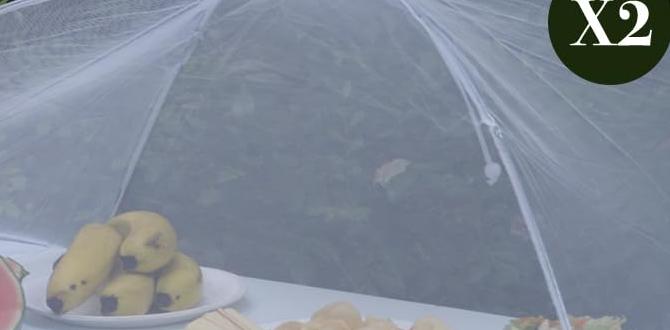Outdoor statues for gardens add charm and personality, making your green spaces more inviting and visually appealing. Choosing the right ones involves considering material, style, placement, and budget to create a cohesive and beautiful outdoor display.
Outdoor Statues for Gardens: Essential & Stunning Additions
Welcome, fellow garden lovers! Ever walk through a garden and feel that spark of magic? Sometimes, it’s not just the flowers or the plants. Often, a well-placed statue can transform a simple patch of green into a captivating retreat. But where do you even begin with outdoor statues for gardens? It can feel a bit overwhelming with so many choices! Don’t worry, we’ll break it down step-by-step. Let’s explore how to pick the perfect pieces to make your garden truly shine. Get ready to discover the secrets to adding enduring beauty and focal points with the right garden statuary.
Why Add Statues to Your Garden?
Before we dive into the “how,” let’s talk about the “why.” Outdoor statues for gardens do more than just look pretty. They serve several wonderful purposes:
- Focal Points: Statues naturally draw the eye, creating a central point of interest in your garden design. This can guide visitors through your space and highlight specific areas.
- Personality and Theme: They inject character and can help establish a specific theme, whether it’s whimsical, serene, spiritual, or modern.
- Balance and Scale: A statue can add visual weight to a part of the garden that feels bare or unbalanced, especially in larger spaces.
- Year-Round Interest: Unlike plants that change with the seasons, a statue remains a constant source of beauty, providing visual appeal even in winter.
- Conversation Starters: A unique or meaningful statue can spark conversations and share a bit of your story with guests.
Types of Outdoor Statues for Gardens
The world of garden statuary is vast! Understanding the different materials and styles will help you narrow down your choices. Let’s look at some popular options:
Material Matters: Durability Meets Design
The material of your statue is crucial for its longevity and how it complements your garden’s aesthetic. Here’s a breakdown of common materials:
- Cast Stone (Concrete/Cement): This is a very popular choice for outdoor statues for gardens. It’s durable, can be molded into intricate designs, and weathers beautifully, often developing a mossy patina over time. It’s also relatively affordable.
- Resin/Resin Composite: Modern resin statues are lightweight, weather-resistant, and can mimic the look of stone, metal, or ceramic at a lower cost. They are excellent for smaller gardens or for those who need to move statues easily.
- Metal (Bronze, Iron, Aluminum): Bronze statues are timeless and gain character with age, often developing a unique verdigris patina. Cast iron is robust but can rust if not treated or sealed. Aluminum is lighter and rust-resistant, a good choice for breezy areas.
- Ceramic/Terracotta: These can be charming, especially for smaller, more decorative pieces. However, they can be brittle and may not withstand harsh freezes or strong winds as well as other materials designed specifically for the outdoors. Always check if they are frost-proof.
- Natural Stone (Granite, Limestone): While beautiful and incredibly durable, stone statues are very heavy and expensive. They offer a very classic and substantial look.
- Wood: Wooden statues can add a warm, natural feel. However, they require regular sealing and maintenance to protect them from rot, insects, and weathering.
Popular Styles to Consider
Beyond material, the style of your statue will define its impact. Think about the overall look and feel of your garden:
- Figurative: These statues represent people, animals, or mythical creatures. Popular choices include angels, religious figures, animals (like birds, frogs, or lions), cherubs, and garden gnomes for a touch of whimsy.
- Abstract: Modern and minimalist gardens often benefit from abstract shapes that offer visual interest without being representational.
- Whimsical/Novelty: Think playful characters, fun garden critters, or quirky designs that add a lighthearted touch.
- Religious/Spiritual: Statues of deities, Buddha heads, or angels can bring a sense of peace and contemplation to a garden space.
- Fountains and Water Features: Many statues are designed to incorporate water, adding the soothing sound and visual appeal of moving water to your garden.
Choosing the Perfect Outdoor Statues for Gardens: A Step-by-Step Guide
Ready to find your garden’s new best friend? Follow these steps for a successful selection:
Step 1: Assess Your Garden Space
Before you fall in love with a tiny fairy or a massive lion, take a good look at your garden.
- Size: Is your garden cozy and intimate, or sprawling and grand? A tiny statue might get lost in a vast landscape, while an oversized piece can overwhelm a small space.
- Style: What’s the current vibe of your garden? Is it formal and manicured, wild and natural, modern, or cottage-style? Your statue should complement, not clash with, your existing aesthetic.
- Existing Elements: Consider your current plants, pathways, seating areas, and any other garden decor.
Step 2: Determine Your Budget
Outdoor statues for gardens range from under $50 to thousands of dollars. Having a budget in mind will help you focus on suitable options.
- Budget-Friendly: Resin, smaller cast stone pieces, or simpler ceramic figures.
- Mid-Range: Larger cast stone, well-made resin, or some metal pieces.
- Investment Pieces: Bronze, hand-carved stone, or unique artistic creations.
Step 3: Select Material with Longevity in Mind
Think about your climate and how much maintenance you’re willing to do. For most gardeners, durability and weather resistance are key.
- For harsh winters: Cast stone, bronze, or treated metal are excellent choices. Avoid materials that can crack from freezing and thawing.
- For sunny, dry climates: Most materials will fare well, but ensure any painted surfaces won’t fade excessively.
- For coastal areas: Opt for corrosion-resistant metals like bronze or aluminum, or resin and sealed cast stone.
Check out resources like the Royal Horticultural Society (RHS) for advice on garden features and their suitability.
Step 4: Choose a Style and Subject
This is where your personal taste really comes into play! What brings you joy?
- Animals: A playful pair of gazing balls, a watchful owl, or a leaping fish can add life.
- People/Figures: Consider serene goddesses, playful cherubs, or contemplative figures.
- Nature-Inspired: Abstract designs mimicking natural forms, mushrooms, or even decorative rocks.
- Whimsical: Garden gnomes, whimsical creatures, or quirky characters.
Step 5: Plan the Placement
Where you put your statue is as important as the statue itself. Think about how it will be seen and how it interacts with its surroundings.
- At the end of a path: To draw the eye forward and create a destination.
- Nestled among plants: To create a hidden surprise or a natural-looking element.
- As a centerpiece: In a quiet seating area or a prominent spot in a lawn.
- Near water: If you have a pond or water feature, a statue can enhance the tranquil atmosphere.
Consider the background. A statue will look best against a contrasting color or texture, or a simple backdrop that allows it to stand out.
Step 6: Installation and Securing
Depending on the size and weight, installation can be simple or require a bit more effort.
- Small statues: Can often be placed directly on the ground, a patio, or a sturdy garden bench.
- Medium to Large statues: May require a level, stable base. Consider a pad of gravel, pavers, or a small concrete footing for larger, heavier pieces to prevent sinking or tipping.
- Windy Areas: For lighter statues in windy locations, you might need to anchor them. Some statues come with pre-drilled holes for stakes, or you can use construction adhesive to secure them to a base.
For very large or heavy statues, it might be wise to seek assistance from a professional installer to avoid injury or damage.
Popular Placements for Outdoor Statues: Visual Examples
Let’s visualize how different placements can transform your garden:
| Placement Idea | Ideal Statue Type | Effect on Garden | Considerations |
|---|---|---|---|
| End of a Winding Path | A welcoming figure, an animal, or a focal point like a gazing ball. | Creates a sense of mystery and reward, drawing visitors deeper into the garden. | Ensure it’s visible from a distance. Path material should lead clearly to it. |
| Nestled in a Perennial Bed | A woodland creature, a semi-abstract form, or a small fairy figurine. | Adds a surprise element, peeking out amongst foliage, enhancing a natural feel. | Choose a material that suits the surrounding plants. Avoid blocking plant growth. |
| On a Patio or Deck Corner | A sleek modern sculpture, a contemplative bust, or a small fountain. | Acts as a decorative accent, adding personality to an outdoor living space. | Ensure it complements outdoor furniture. Consider ease of cleaning around it. |
| By a Water Feature (Pond, Birdbath) | A water sprite, a serene animal, or a cascading fountain statue. | Enhances the tranquil and natural beauty of the water element. | Ensure materials are water-safe and won’t leach harmful substances. |
| Center of a Formal Garden Bed | A classic angel, a sundial, or an obelisk-style sculpture. | Serves as a grand focal point, anchoring the symmetry of the design. | Scale is crucial – it should be proportionate to the bed size. |
| Beneath a Mature Tree | A rustic animal, a fairy house, or a weathered stone carving. | Adds a touch of enchantment and complements the natural, aged look of the tree. | Ensure stability and consider how it looks with dappled sunlight. |
Caring for Your Outdoor Statues
To keep your outdoor statues for gardens looking their best for years to come, a little care goes a long way:
- Cleaning: For most statues (stone, resin, metal), a gentle wash with mild soap and water using a soft brush or cloth is sufficient. Avoid abrasive cleaners that can scratch or damage the surface.
- Winter Protection: In regions with freezing temperatures, it’s often recommended to bring porous statues (like some ceramics, terracotta, or even certain cast stones if not properly sealed) indoors to prevent damage from ice expansion. For more durable materials, a good quality sealant can offer protection.
- Sealing: Many cast stone and concrete statues can benefit from a clear, non-yellowing, breathable sealant. This helps protect against moisture, stains, and UV damage. Reapply as needed, typically every few years. You can find suitable sealants at hardware or specialty garden supply stores.
- Dealing with Moss and Algae: A light green patina or a bit of moss can add character. If you want to remove it, a diluted solution of household bleach (1 part bleach to 10 parts water) or a specialized garden cleaner can be used, followed by a thorough rinse. Always test on an inconspicuous area first.
- Metal Maintenance: For iron or steel, watch for rust spots and apply a rust-inhibiting primer and paint if necessary. For bronze, a periodic waxing can help maintain its luster or the development of its patina.
Proper care ensures your chosen piece remains a cherished part of your garden landscape.
DIY Statue Ideas for the Creative Gardener
Feeling inspired to get hands-on? You can create your own unique garden features!
- Painted Rocks: Collect smooth rocks and paint them with fun designs, ladybugs, or inspirational quotes. Seal them with an outdoor-grade sealant.
- Mosaic Stepping Stones: Embed broken ceramic tiles or glass into concrete stepping stones for colorful, personalized elements.
- Upcycled Garden Art: Old metal items, garden tools, or even tires can be creatively repurposed into garden sculptures. (Always ensure they are safely prepared and won’t leach contaminants).
- Concrete Molds: Use old buckets, bowls, or other containers to create simple concrete forms. You can embed decorative elements into the wet concrete.
Many tutorials can be found online for specific DIY projects. For instance, understanding concrete basics from a resource like This Old House can be a great starting point for DIY concrete projects.
Frequently Asked Questions about Outdoor Statues for Gardens
Can any statue be used outdoors?
No, not all statues are suitable for outdoor use. Materials like plaster, untreated wood, or certain types of ceramic can be damaged by moisture, temperature fluctuations, and UV light. Always look for statues specifically advertised as “outdoor,” “weather-resistant,” or made from durable materials like cast stone, resin, bronze, or treated metal.
How do I prevent my garden statue from tipping over?
For smaller statues, ensure they are placed on a stable, level surface. For larger or lighter statues in windy areas, consider anchoring them to the ground or a solid base using stakes, construction adhesive, or by filling hollow bases with sand or gravel.
What is the best material for an outdoor garden statue?
The “best” material depends on your priorities. Cast stone and resin are popular for their durability, cost-effectiveness, and ability to be molded into various designs. Bronze is a classic, long-lasting, and beautiful option that ages gracefully but is more expensive. Metal statues can also be very durable.
How do I clean moss off my garden statue?
You can gently scrub moss off with a soft brush and a mixture of mild soap and water. For tougher moss or algae, a diluted solution of household bleach (1 part bleach to 10 parts water) can be effective, but always rinse thoroughly afterward and test in an inconspicuous spot first.
Should I seal my cast stone garden statue?
Sealing a cast stone statue is highly recommended, especially in climates with harsh winters or significant rainfall. A clear, breathable, non-yellowing sealant can help protect it from moisture absorption, staining, and UV damage, extending its lifespan and maintaining its appearance.
How large should a garden statue be?
The ideal size depends on your garden’s scale. A small statue can get lost in a large landscape, while a giant statue can overwhelm a tiny garden. Measure the intended space and consider the visual impact. A good rule of thumb is that the statue should be proportional to its surroundings.
Conclusion: Bring Your Garden to Life
Adding outdoor statues for gardens is a wonderful way to infuse your outdoor spaces with personality, beauty, and enduring charm. By considering the material, style, your garden’s unique attributes, and a touch of thoughtful placement, you can find or create pieces that truly resonate with you and enhance the natural beauty of your surroundings. Whether you opt for a whimsical creature peeking from a flowerbed, a serene figure by a water feature, or a modern accent on your patio, these static elements bring a dynamic sense of art and character to your gardening endeavors. Embrace the joy of personalizing your green haven and watch as your chosen statues become beloved focal points for years to come!







